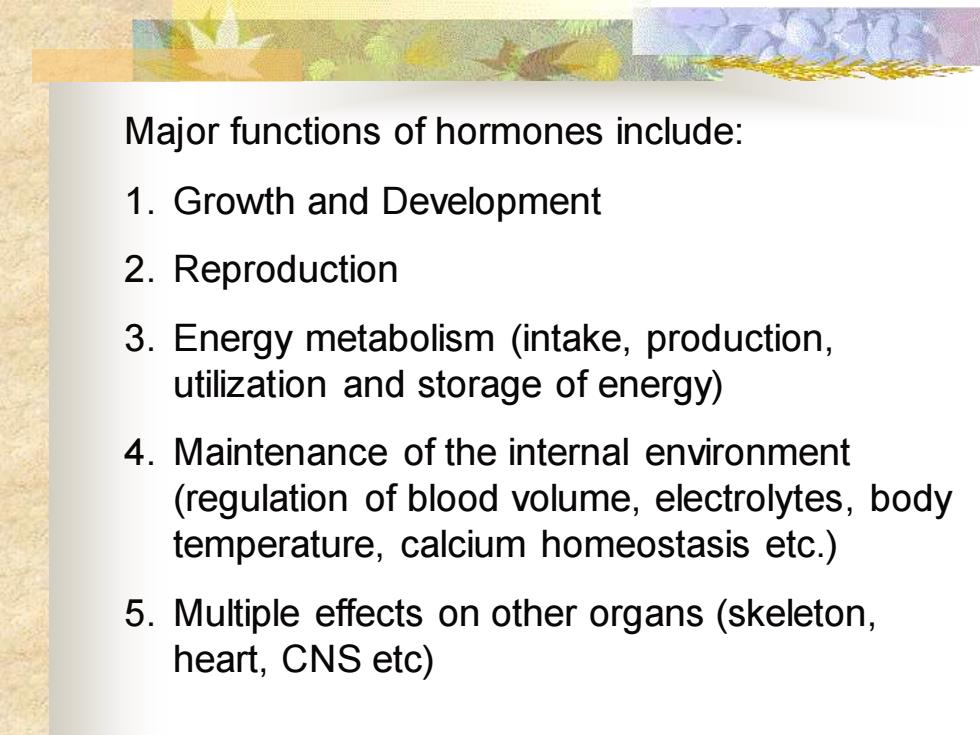
Major functions of hormones include:1. Growth and Development2. Reproduction3. Energy metabolism (intake, production,utilization and storage of energy)4. Maintenance of the internal environment(regulation of blood volume, electrolytes, bodytemperature, calcium homeostasis etc.)5. Multiple effects on other organs (skeletonheart, CNS etc)
Major functions of hormones include: 1. Growth and Development 2. Reproduction 3. Energy metabolism (intake, production, utilization and storage of energy) 4. Maintenance of the internal environment (regulation of blood volume, electrolytes, body temperature, calcium homeostasis etc.) 5. Multiple effects on other organs (skeleton, heart, CNS etc)
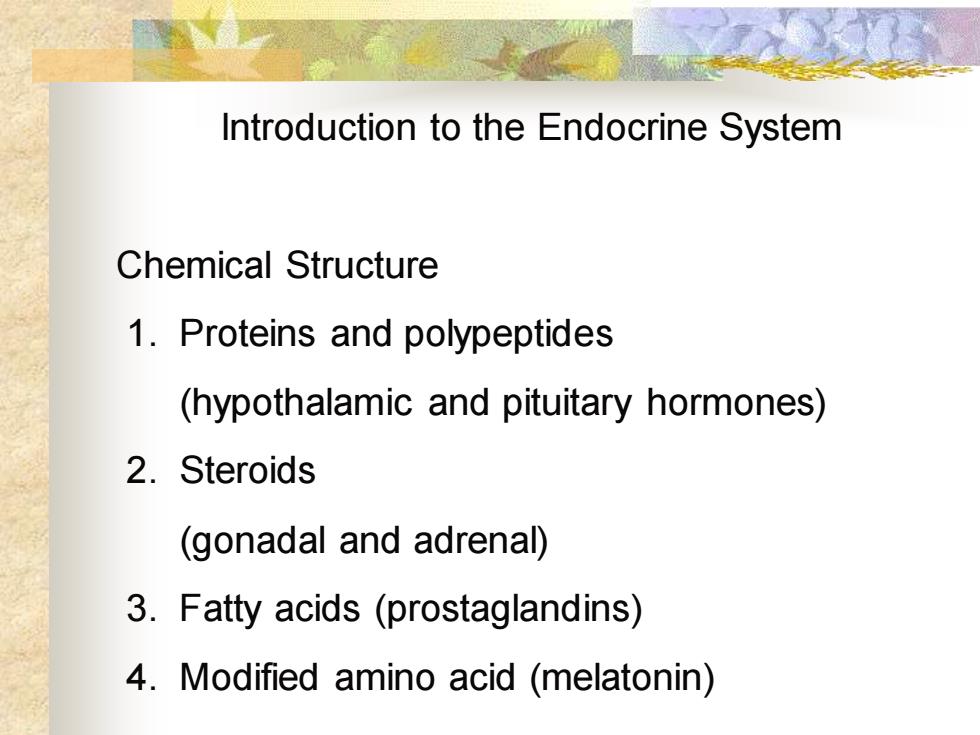
Introduction to the Endocrine SystemChemical Structure1. Proteins and polypeptides(hypothalamic and pituitary hormones)2. Steroids(gonadal and adrenal)3. Fatty acids (prostaglandins)4. Modified amino acid (melatonin)
Introduction to the Endocrine System Chemical Structure 1. Proteins and polypeptides (hypothalamic and pituitary hormones) 2. Steroids (gonadal and adrenal) 3. Fatty acids (prostaglandins) 4. Modified amino acid (melatonin)
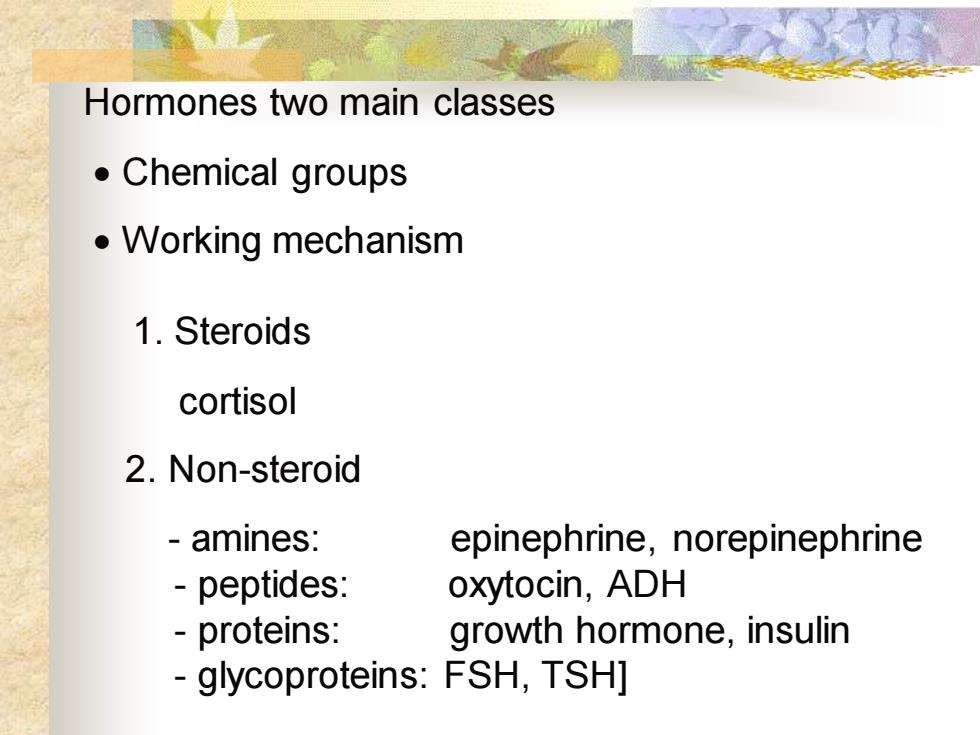
Hormonestwomain classes·Chemical groups? Working mechanism1. Steroidscortisol2. Non-steroid- amines:epinephrine, norepinephrineoxytocin, ADH- peptides:- proteins:growth hormone, insulin- glycoproteins: FSH, TSH]
Hormones two main classes • Chemical groups • Working mechanism 1. Steroids cortisol 2. Non-steroid - amines: epinephrine, norepinephrine - peptides: oxytocin, ADH - proteins: growth hormone, insulin - glycoproteins: FSH, TSH]
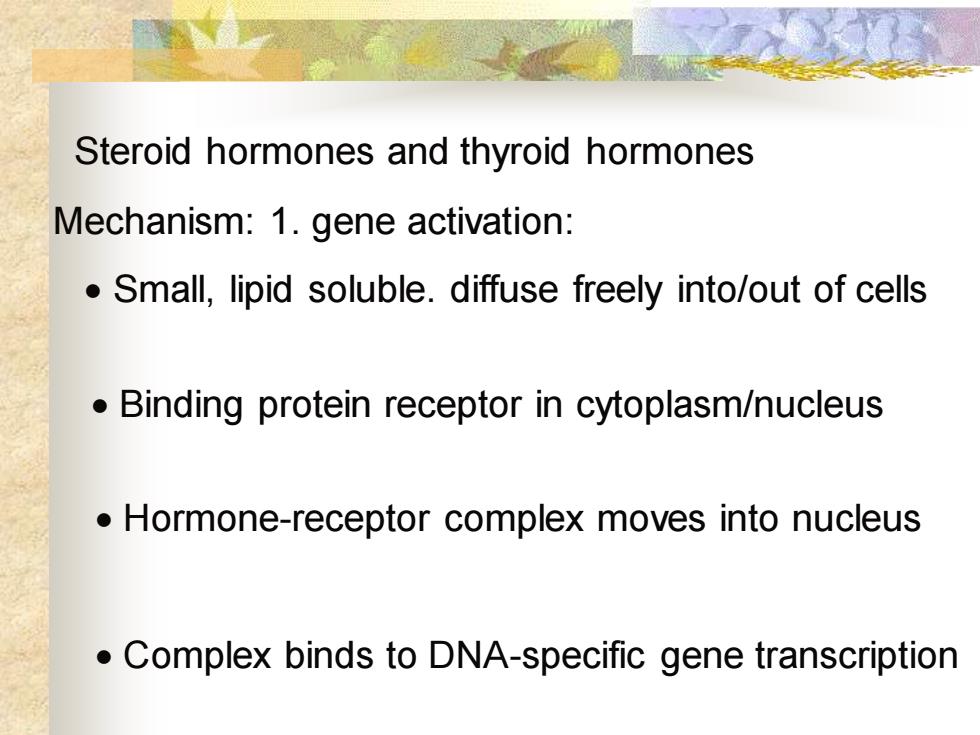
Steroid hormones and thyroid hormonesMechanism: 1.gene activation:· Small, lipid soluble. diffuse freely into/out of cells. Binding protein receptor in cytoplasm/nucleus·Hormone-receptor complex moves into nucleus·Complex binds to DNA-specific gene transcription
Steroid hormones and thyroid hormones Mechanism: 1. gene activation: • Small, lipid soluble. diffuse freely into/out of cells • Binding protein receptor in cytoplasm/nucleus • Hormone-receptor complex moves into nucleus • Complex binds to DNA-specific gene transcription
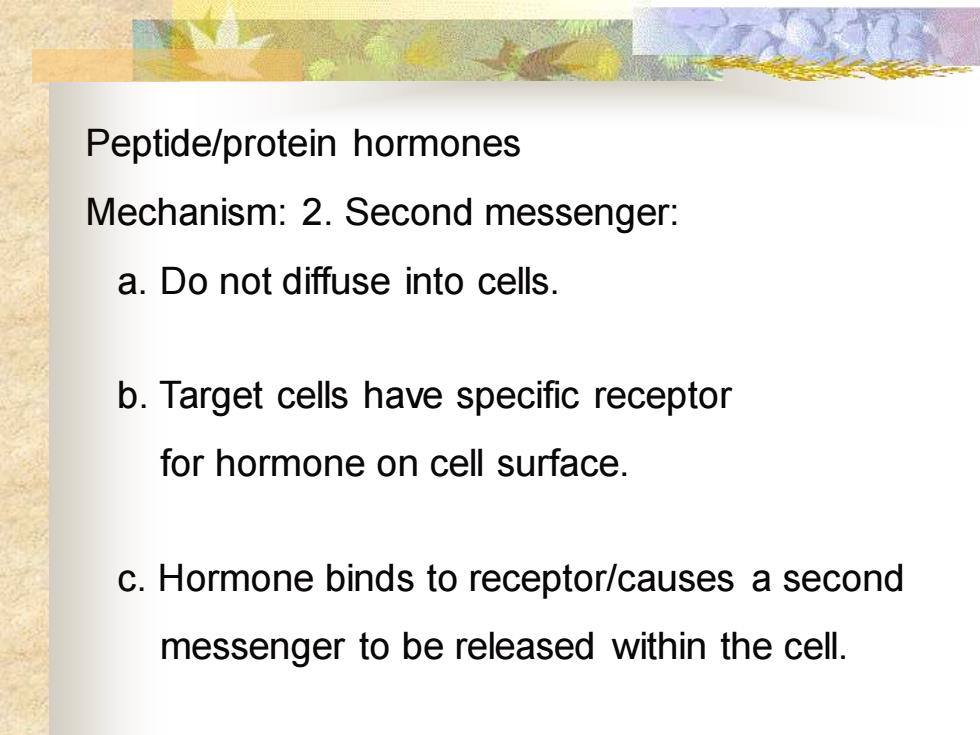
Peptide/protein hormonesMechanism: 2. Second messenger:a. Do not diffuse into cellsb. Target cells have specific receptorfor hormone on cell surfacec. Hormone binds to receptor/causes a secondmessenger to be released within the cell
Peptide/protein hormones Mechanism: 2. Second messenger: a. Do not diffuse into cells. b. Target cells have specific receptor for hormone on cell surface. c. Hormone binds to receptor/causes a second messenger to be released within the cell